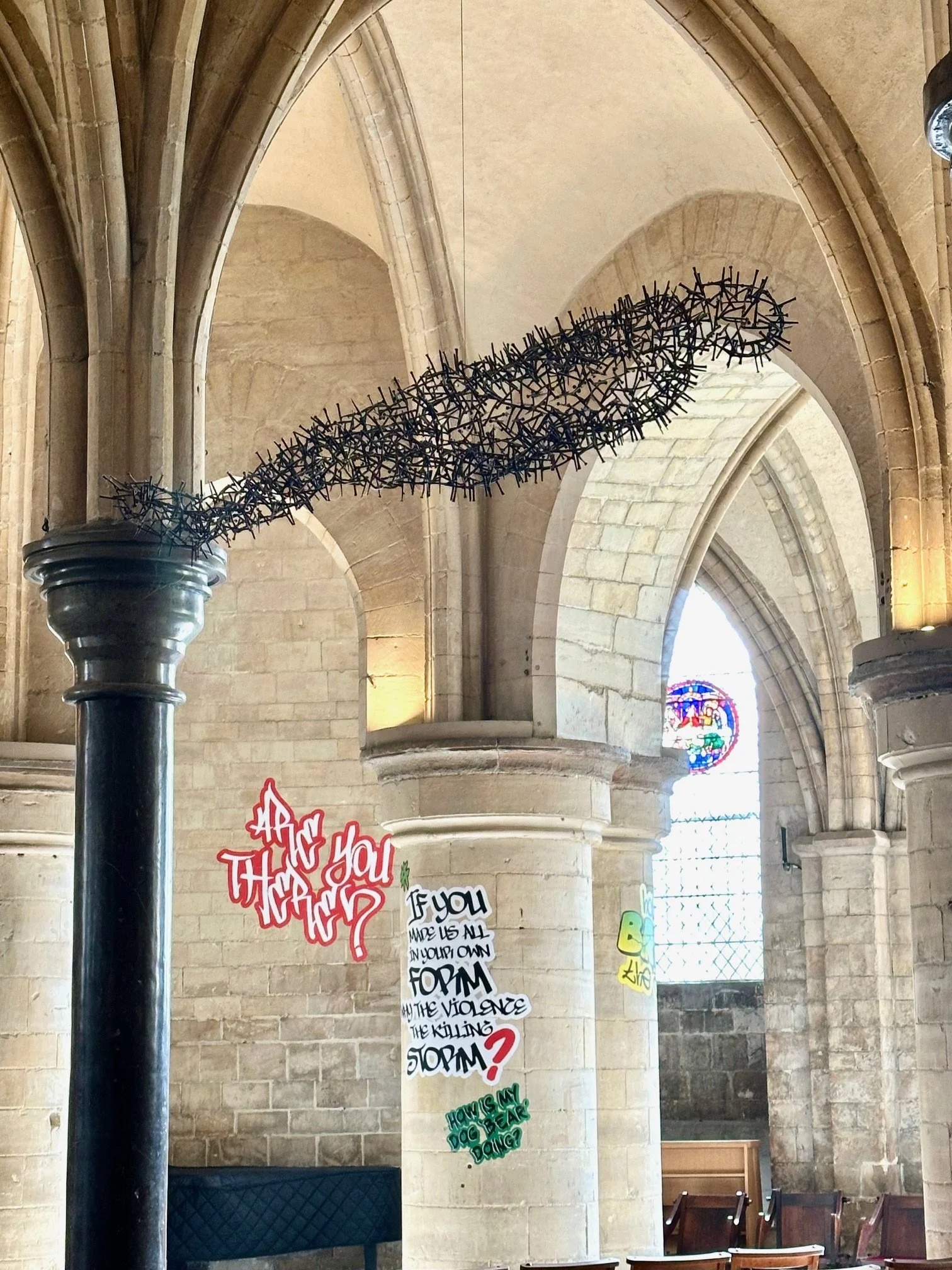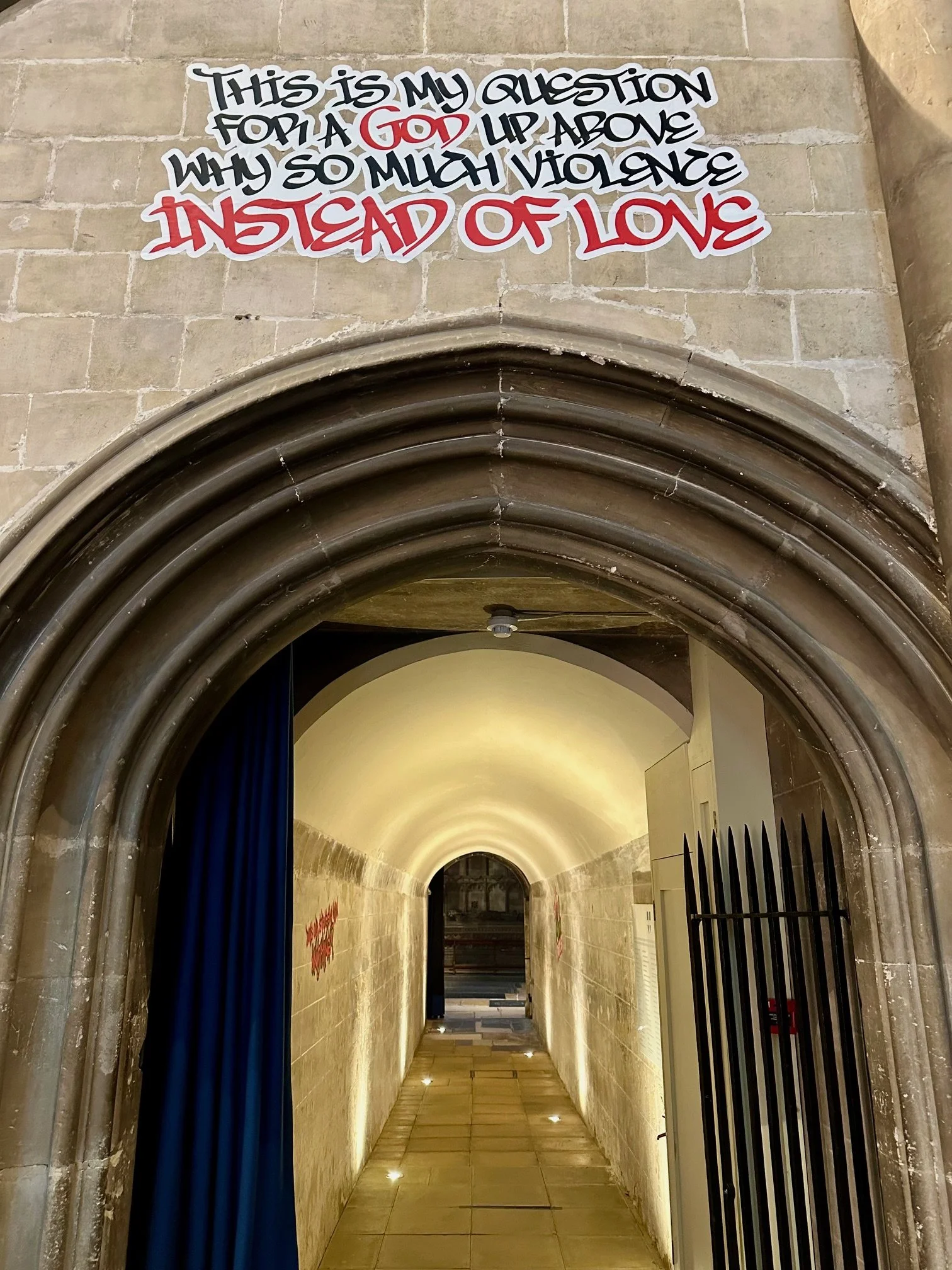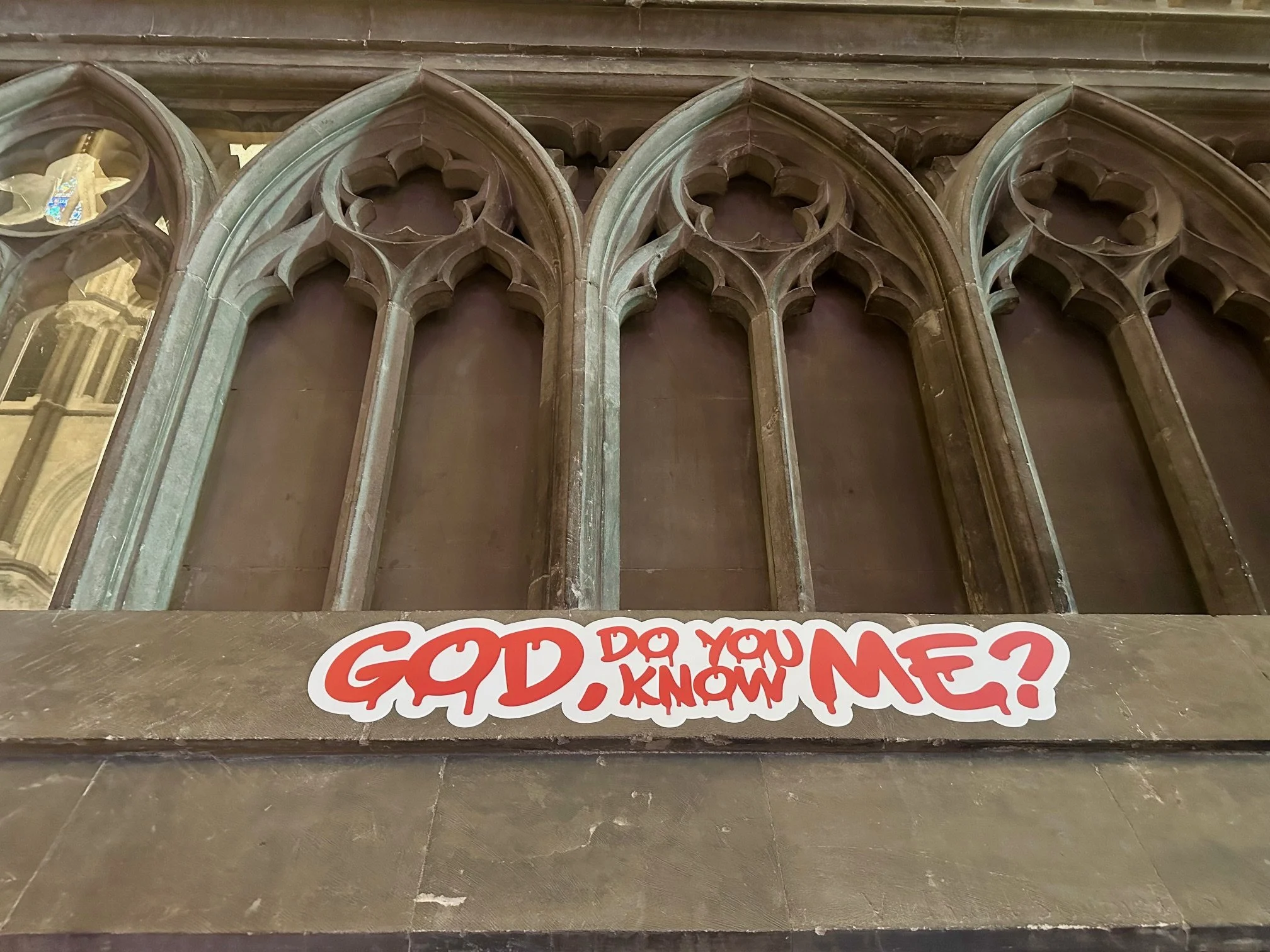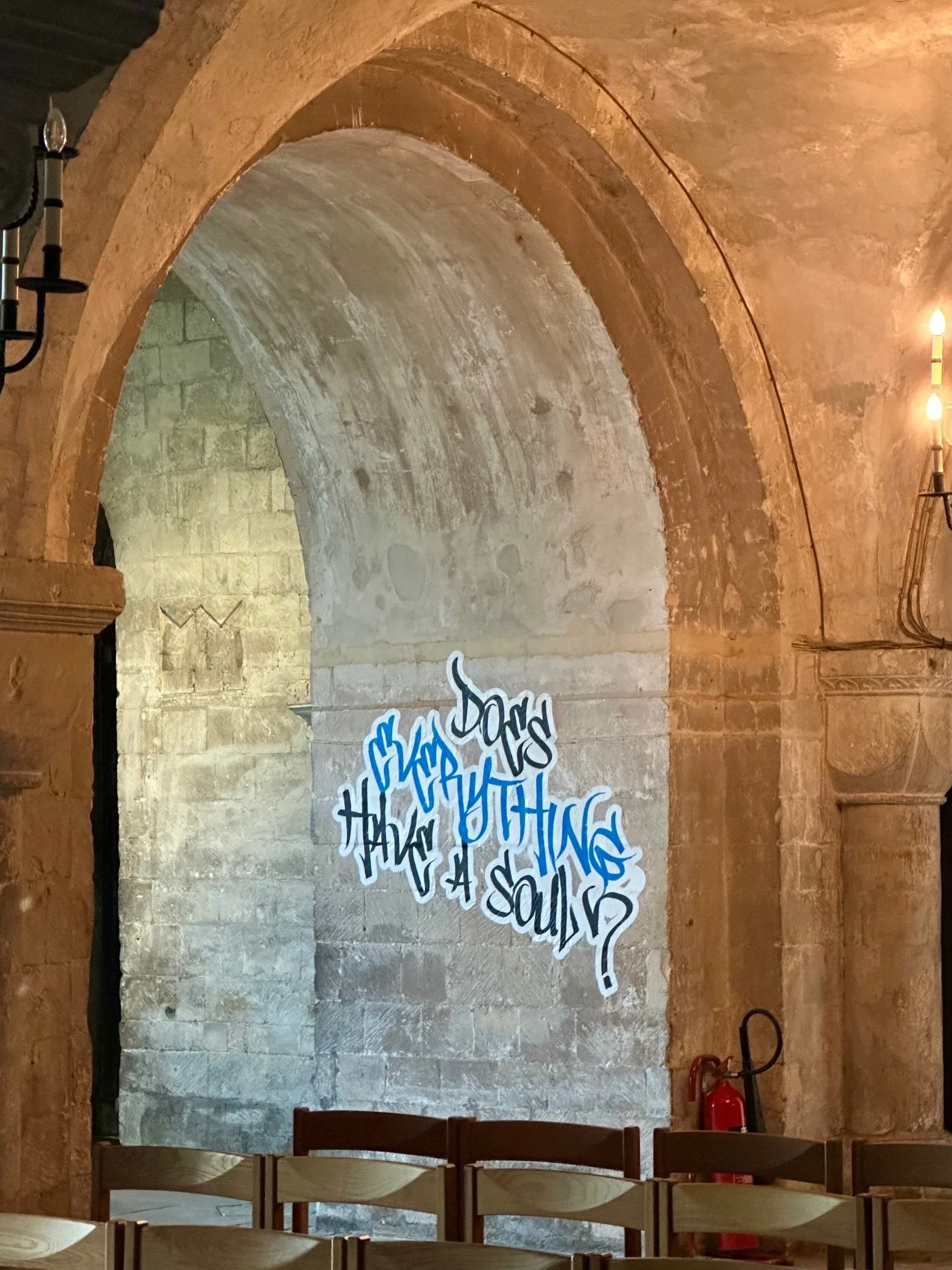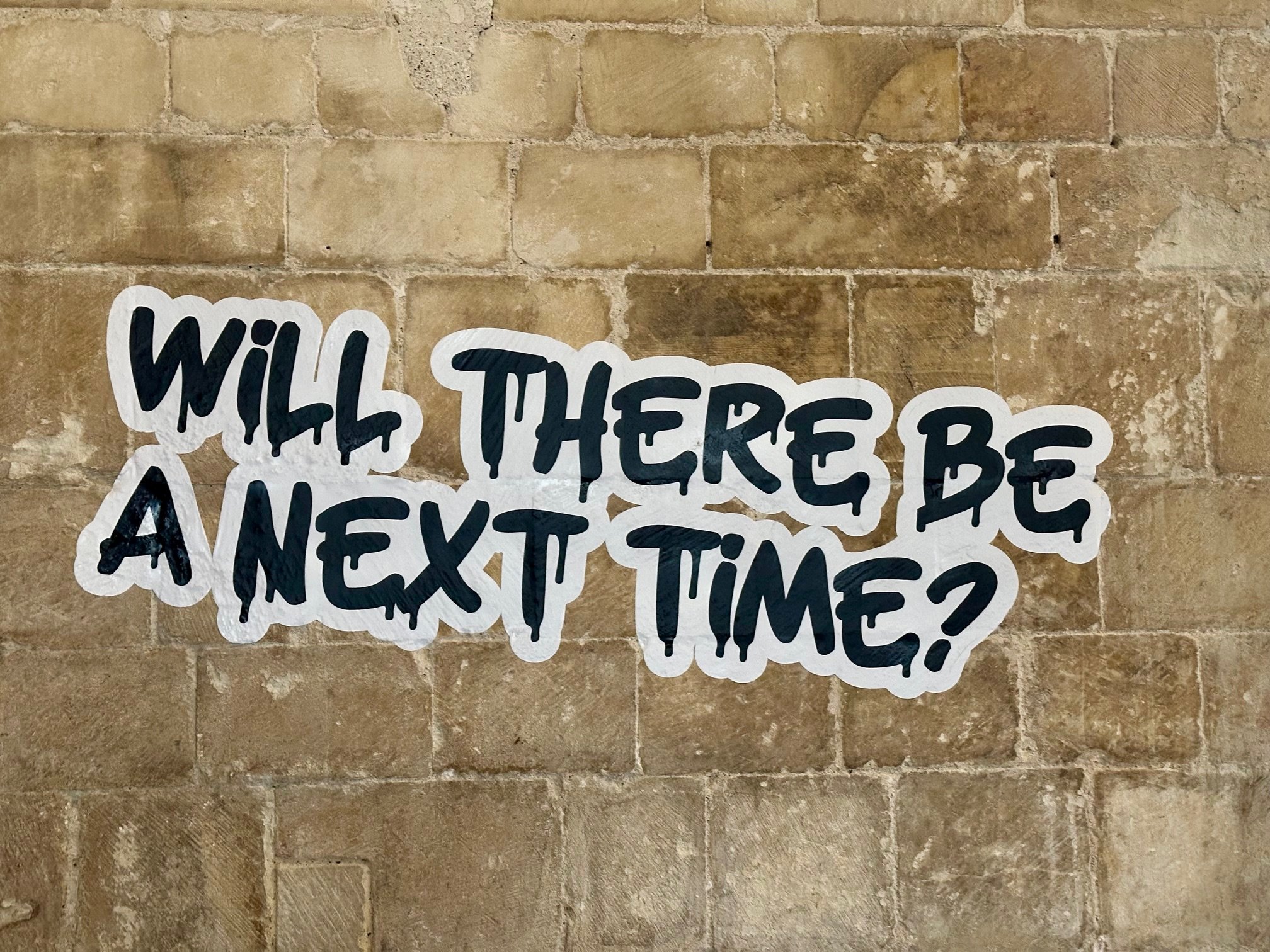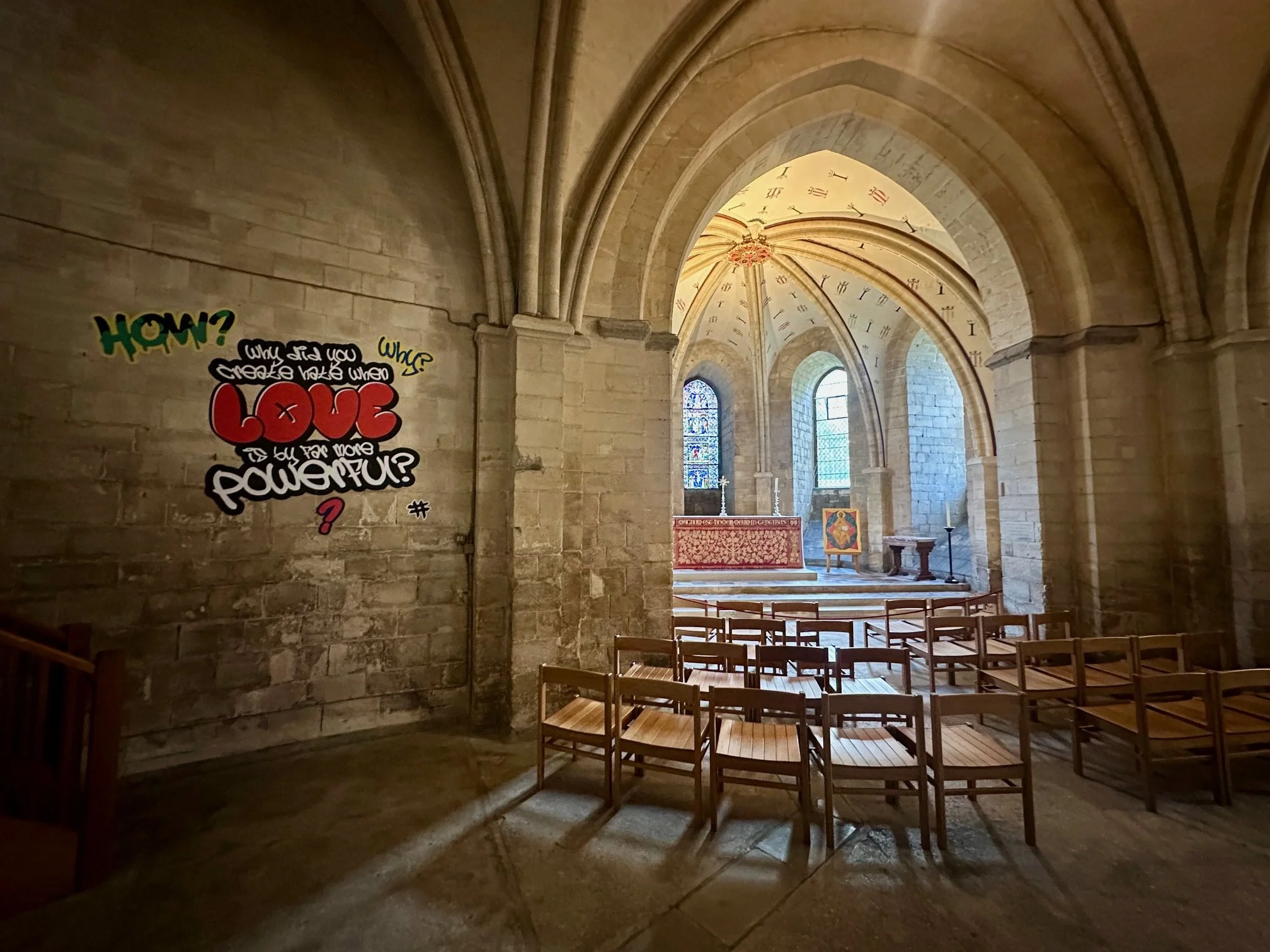
“HEAR US” at Canterbury Cathedral
17 October 2025 to 18 January 2026
CURATED BY JACQUILINE CRESWELL FOR CANTERBURY CATHEDRAL
I was brought up to believe that God loves us all, he sees us and hears us! I would like to thank the Dean and Chapter for opening their doors to the marginalised voices of the Canterbury community in this extraordinary exhibition, giving them an opportunity to be seen and heard in this magnificent sacred place.
The "HEAR US" exhibition at Canterbury Cathedral is deeply relevant today for several reasons, it touches on themes of community, spirituality, and the evolving nature of faith in our contemporary society.
In an era marked by uncertainty and existential queries, this exhibition invites participants to voice their most profound questions to God. This is particularly significant in a time when many grapple with issues of identity, purpose, and morality. The act of questioning itself becomes a form of prayer and reflection, offering a way to confront personal and societal challenges collaboratively and in a safe environment.
By collaborating with marginalized communities—including the Punjabi, black and brown diaspora, neurodivergent individuals, and the LGBTQIA+ population—the exhibition promotes inclusivity and representation. It transforms the cathedral into a space where diverse voices can be heard, validating their experiences and fostering a sense of belonging. In a society that often silences these communities, “HEAR US” creates a platform for dialogue and expression.
Juxtaposing contemporary graffiti with the ancient architecture of Canterbury Cathedral, this exhibition engages with the dialogue between tradition and innovation. It reminds us that spirituality and worship are not static; they evolve in response to contemporary experiences and cultural shifts . This dynamic reinforces the idea that faith can adapt, resonate, and remain relevant across generations.
This project encouraged participants to engage in self-discovery through the act of questioning. By posing inquiries to God, attendees were invited to explore their beliefs, values, and aspirations which fostered a deeper spiritual connection. The anonymity offered them, allowed for honest expression, making it possible to confront discomfort and ambiguity in a supportive environment.
The installation also draws on the long history of graffiti within Canterbury Cathedral—as a form of pilgrimage and personal expression—this exhibition taps into a rich legacy of voices that have sought to leave their mark in sacred spaces. "HEAR US" connects modern questions and struggles with the historical narratives of those who have come before, showing that the quest for answers is part of the human experience throughout time.
Click on each logo to read the press articles
Exhibiting Faith Podcast - In this episode, David Trigg is joined by curator Jacquiline Creswell and poet Alex Vellis to discuss the exhibition "Hear Us" at Canterbury Cathedral, which centres on the idea of asking God a question.
"HEAR US" is a poignant reflection of contemporary society's search for meaning, connection, and expression. By blending art, community engagement, and spirituality, it resonates deeply with current audiences, offering a space for dialogue and personal growtnh. This project not only honours age-old traditions but also reinvigorates them, ensuring that the voices of the present are heard within the sacred walls of Canterbury Cathedral.
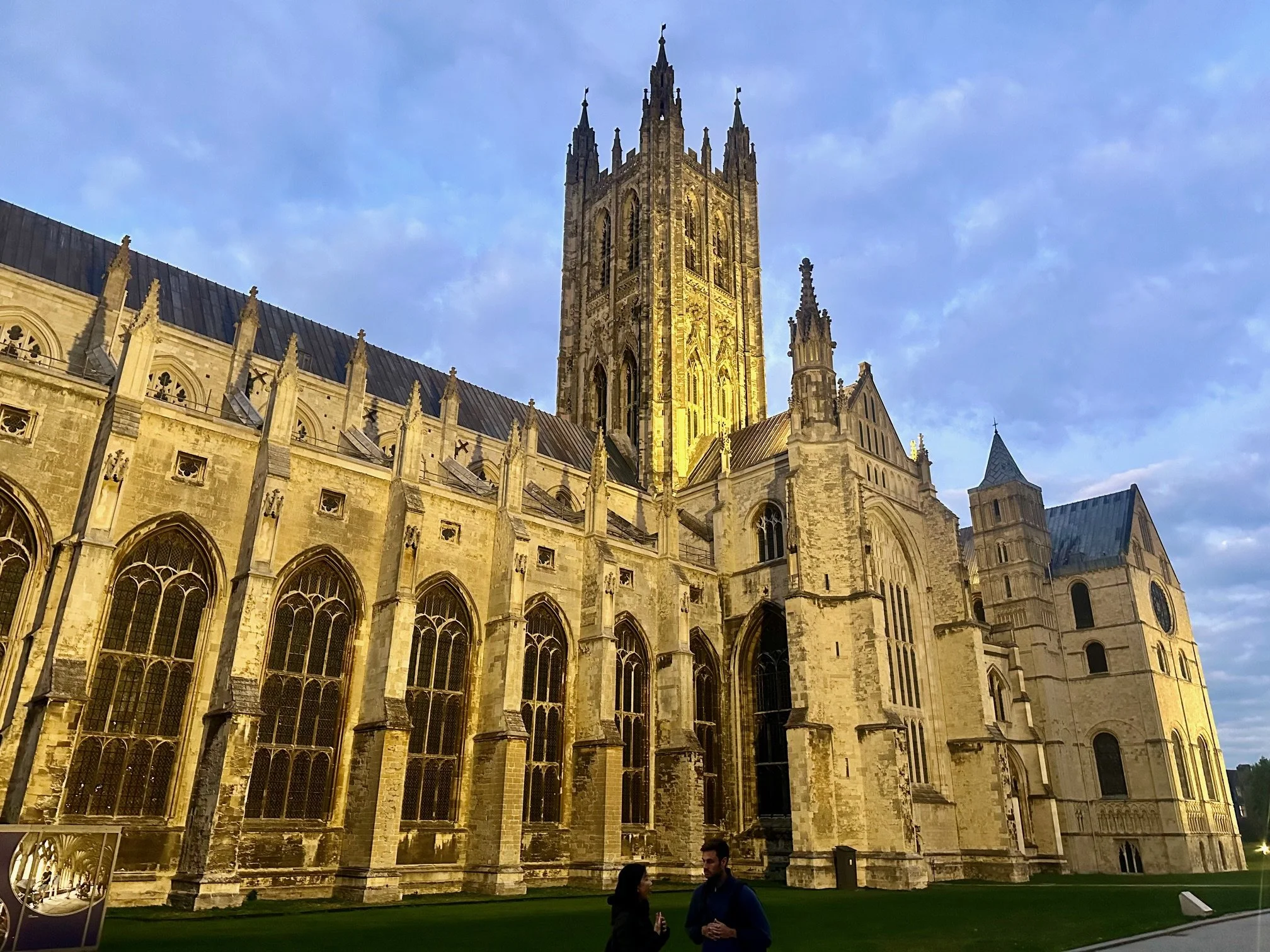
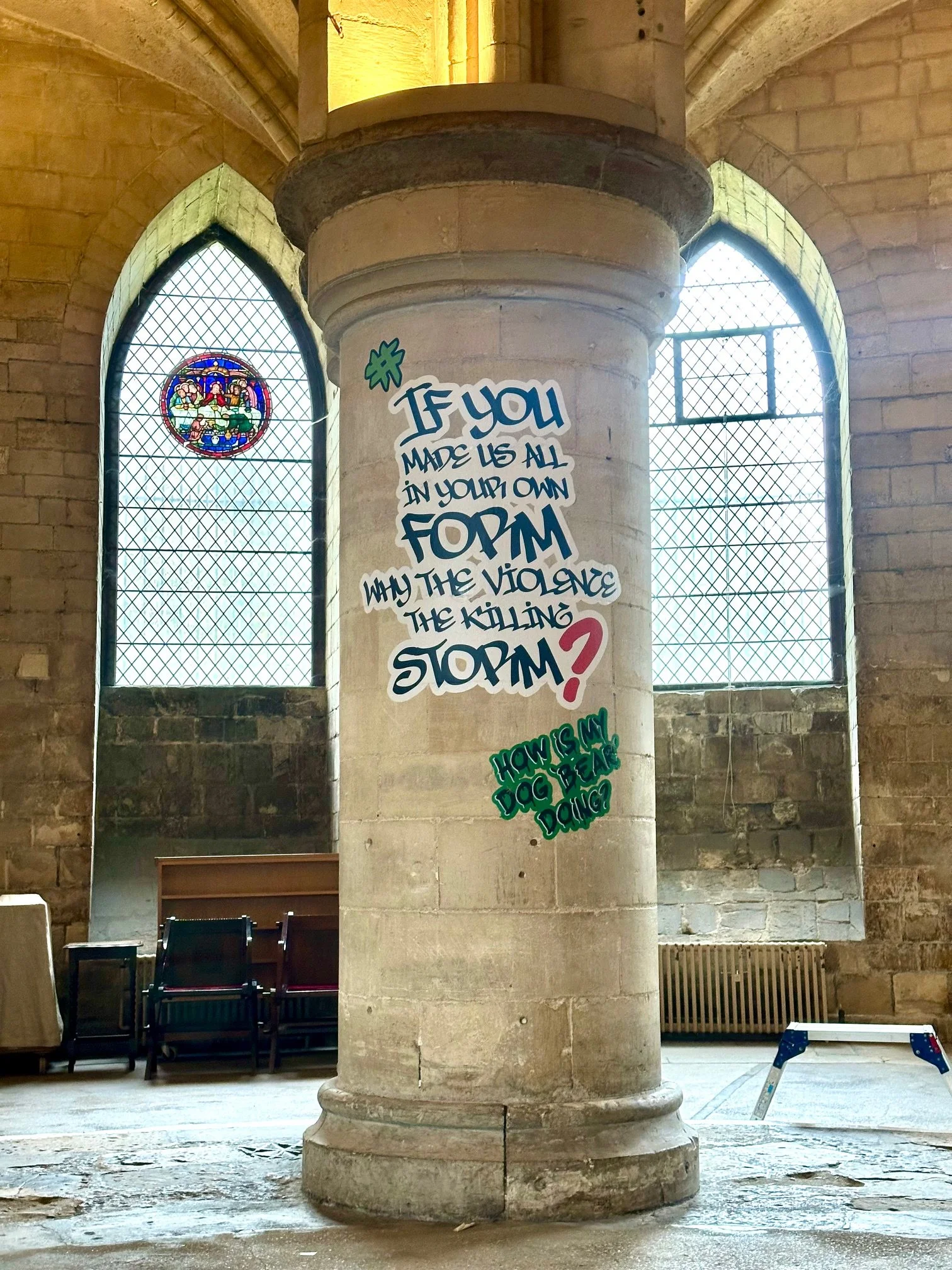
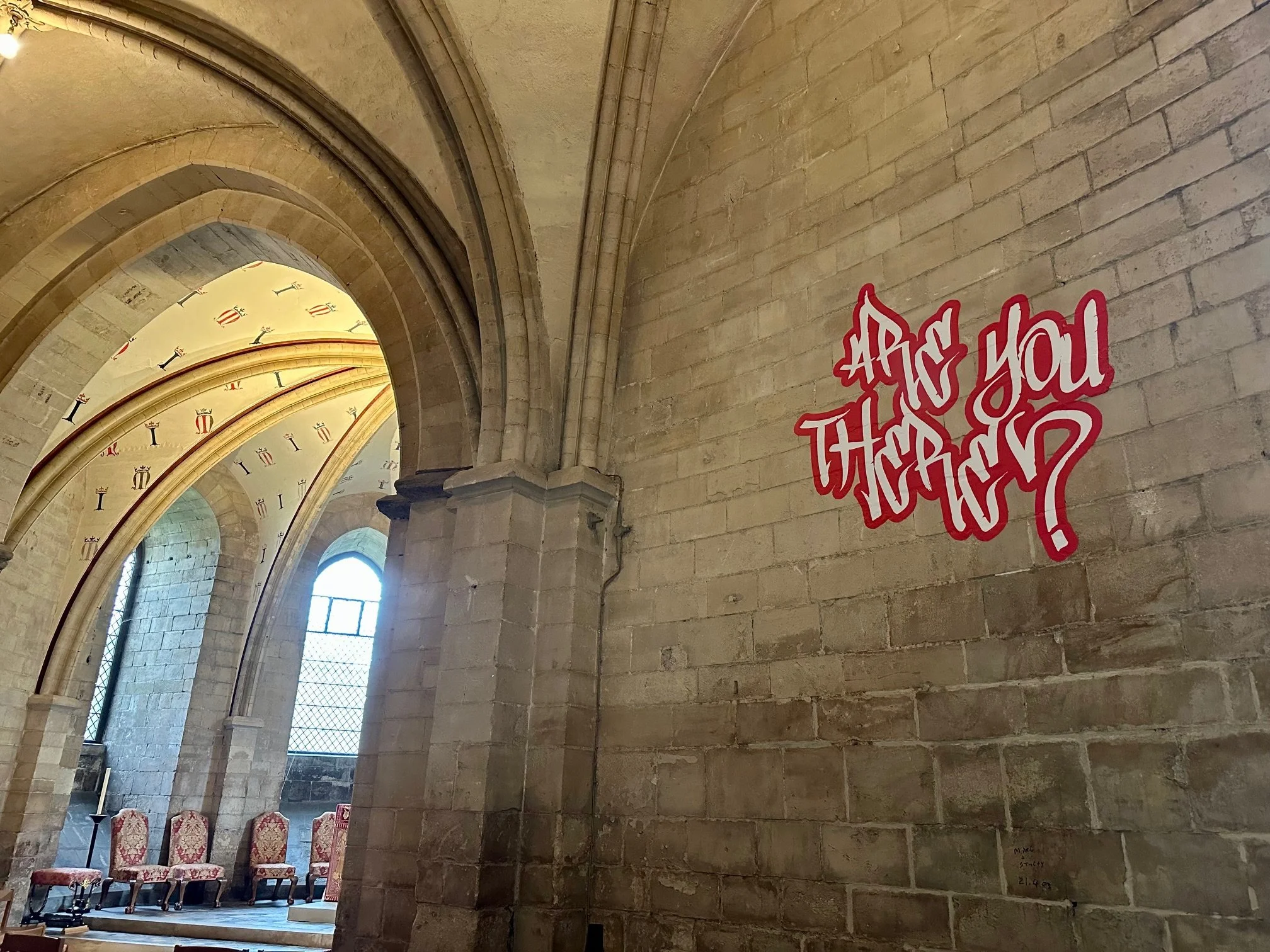
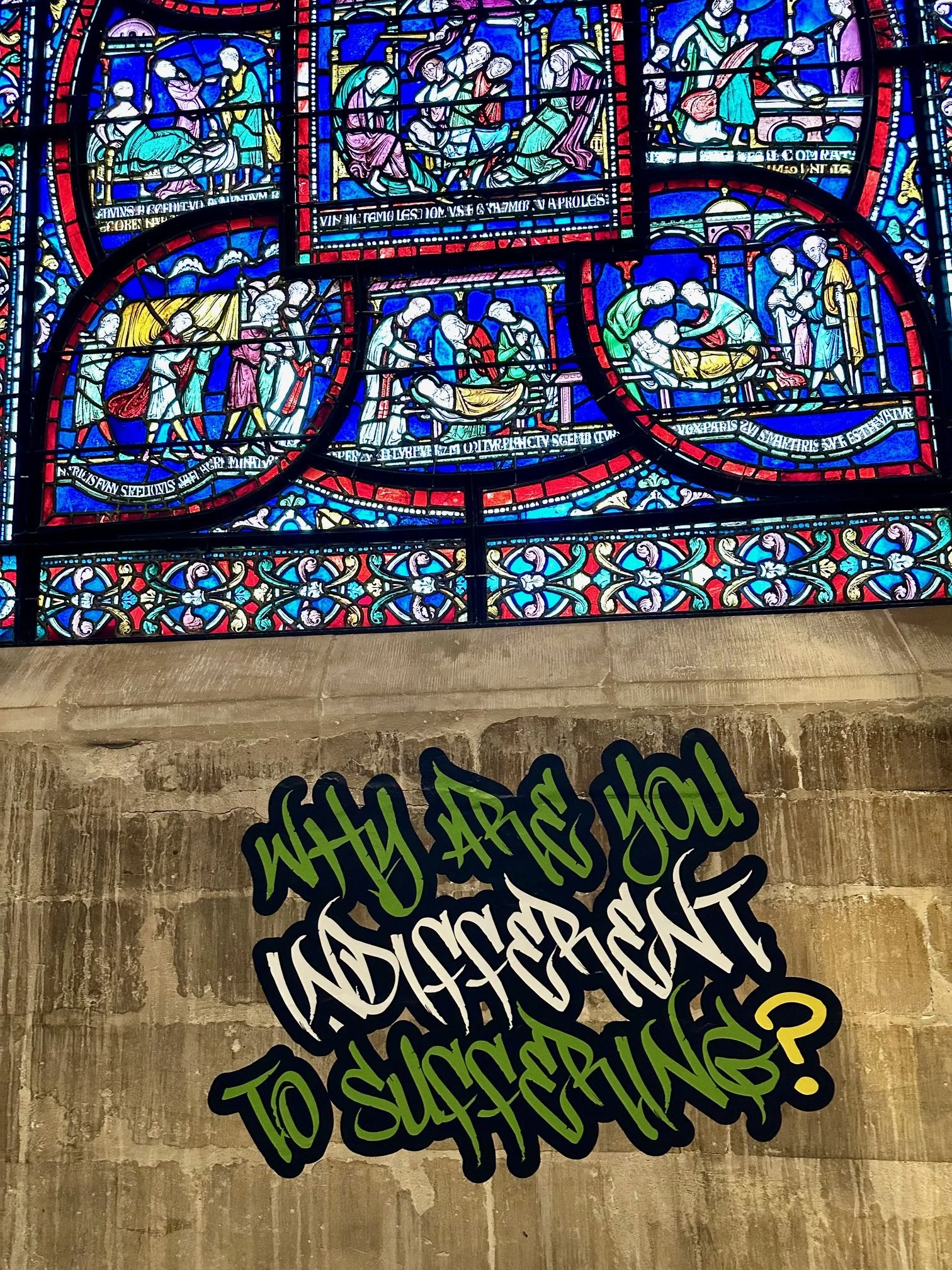

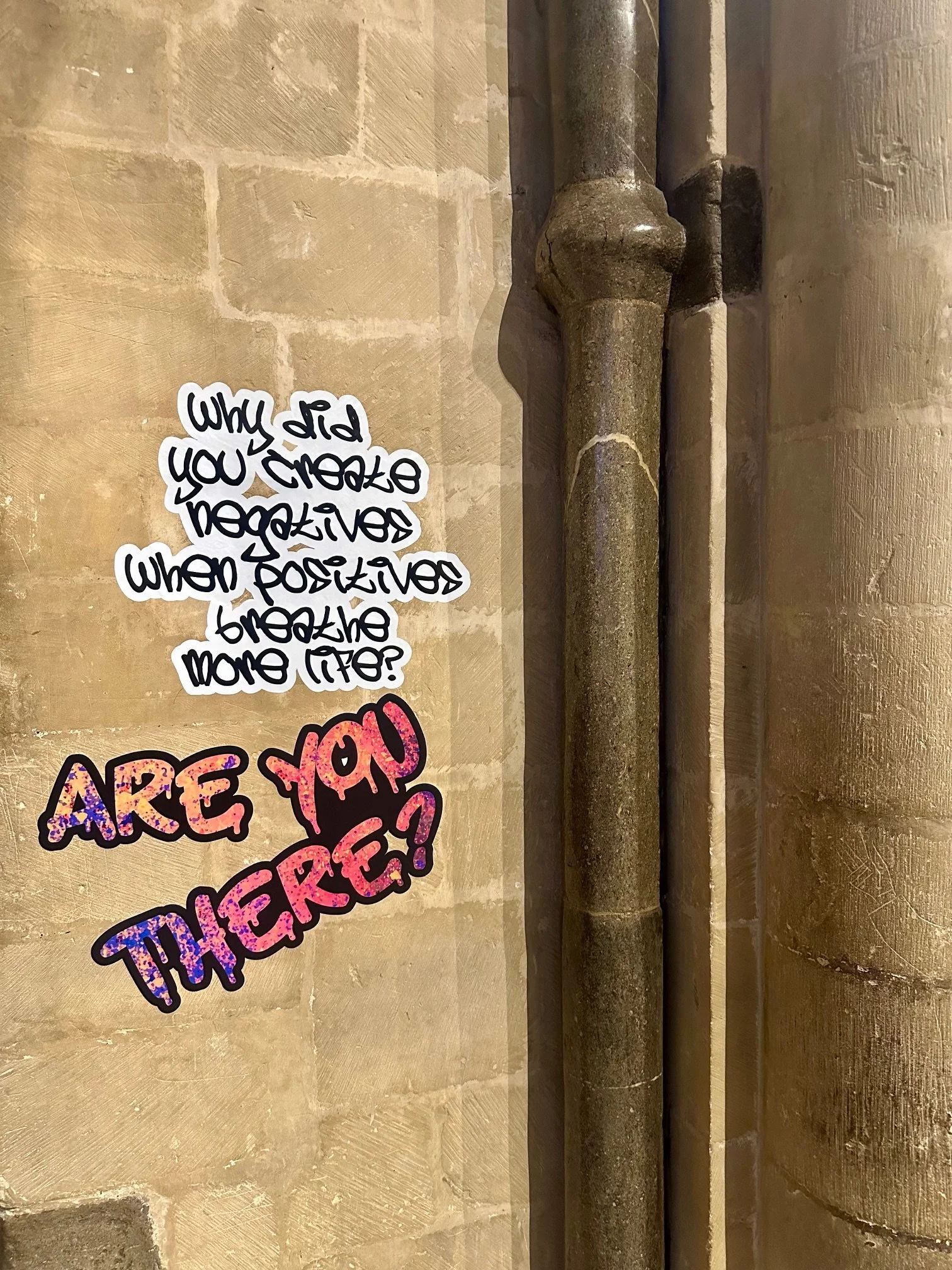
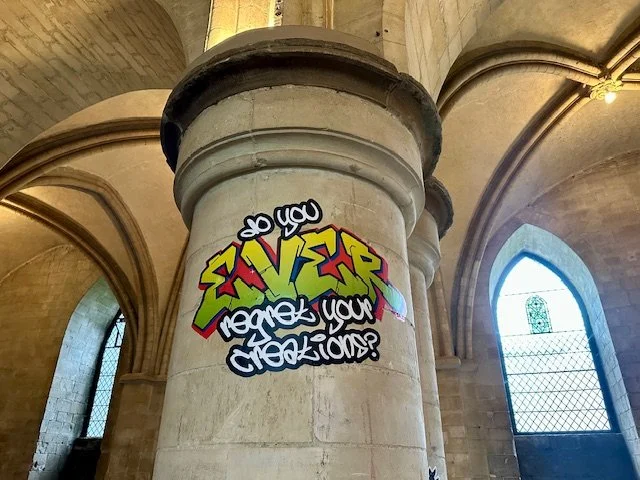

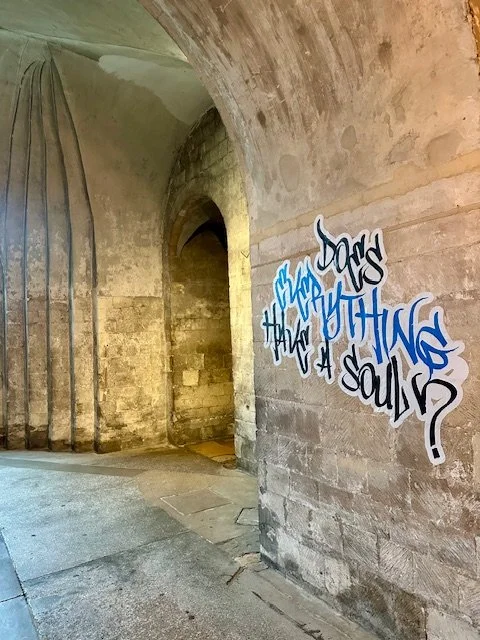
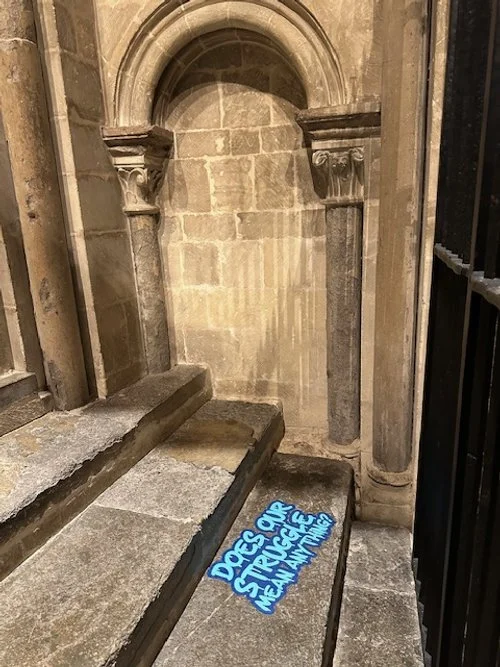
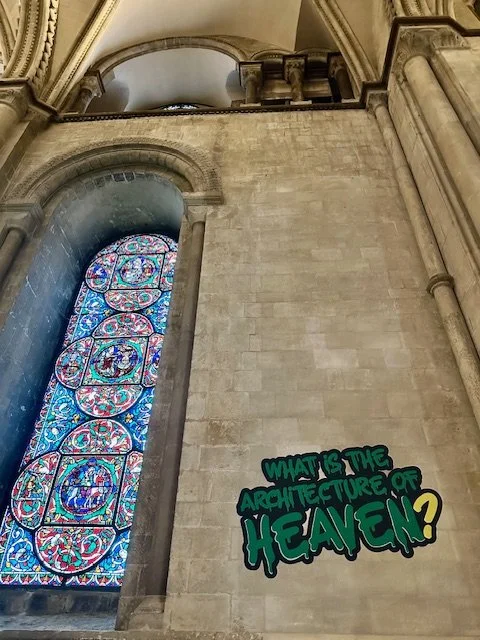
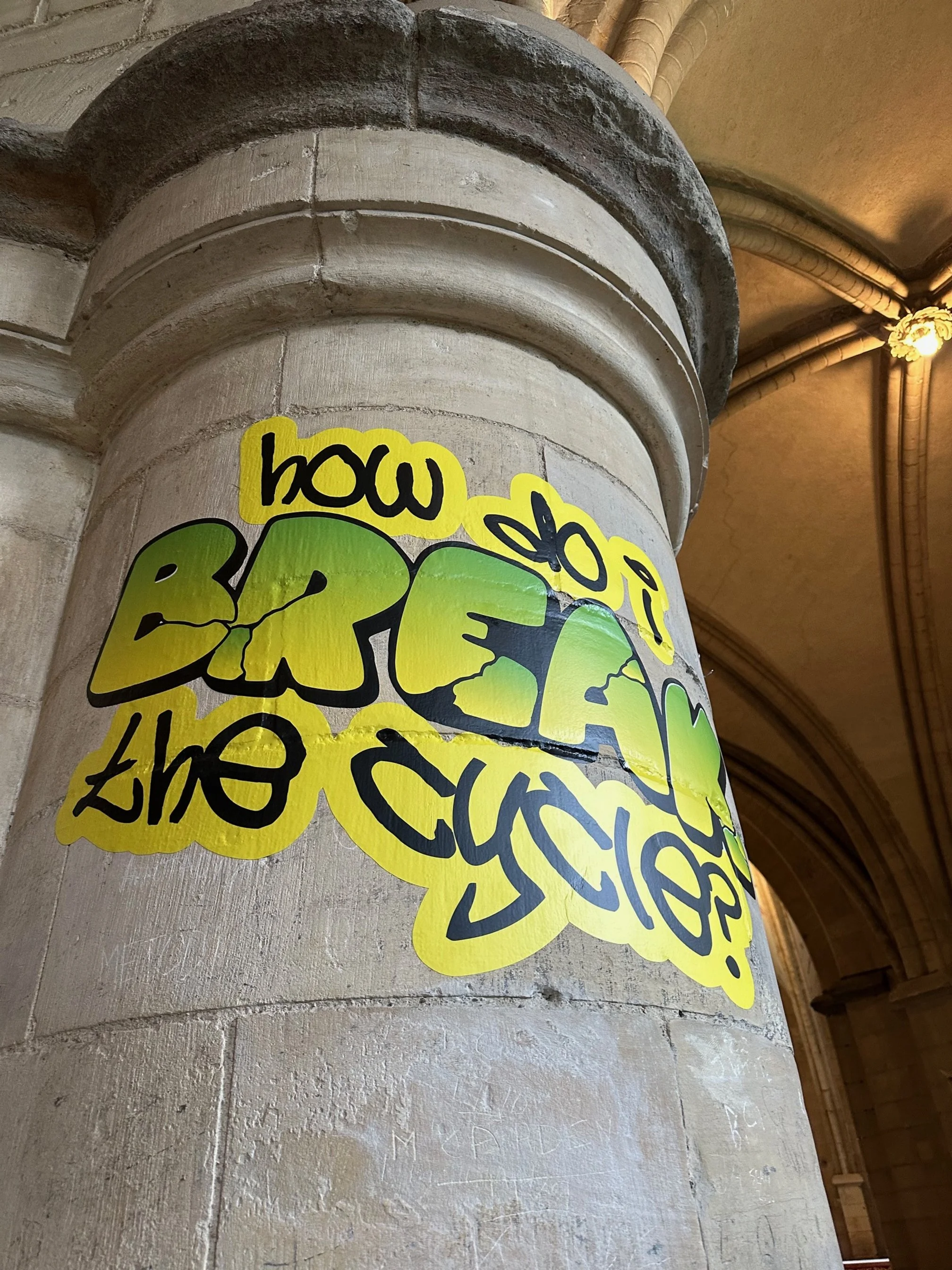
Essay by Curator Jacquiline Creswell
Jesus said in Matthew 7:7-8,
“Ask and it will be given to you: seek and you will find: knock and the door will be opened to you. For everyone who asks receives: the one who seeks finds and the one who knocks, the door will be opened”
Surely we have all wondered about the mysteries of the universe, the meaning of life, or in times of uncertainty, sought advice? We may want to ask God a question to find answers to life's most profound inquiries. Whether it be about the existence of good and evil, the afterlife, or the purpose of suffering. Turning to God in moments of doubt or confusion to seek guidance from a higher power can offer reassurance and a sense of purpose.
Within a theological context, posing a question to God is viewed as a form of prayer, meditation, or contemplation, in return receiving guidance and solace from a source believed to be all-knowing and compassionate. By reaching out to the Divine with personal inquiries, individuals may find comfort, clarity, and direction amidst life's uncertainties.
The exhibition
Poet Alex Vellis and curator Jacquiline Creswell have joined forces with a team of skilled artists to craft a thought-provoking exhibition delving into the concept of raising a question to God in our contemporary society. This project focuses on partnering with marginalised communities—such as Punjabi, black and brown diaspora, neurodivergent, and LGBTQIA+ groups—to collaboratively create handwritten literature responding to the question, "What would you ask God?"
Through several workshops held earlier this year, those involved explored poetry, curiosity, and authority, and this profoundly uplifting community action comes to life in a dynamic graffiti-style display within the Cathedral, with participants each expressing a question to God. The workshops conducted as part of this project not only ignited inquiries but also stirred up poetic expression, leaving participants feeling affirmed, empathised with, and embraced by their peers. These gatherings offered a platform for individuals to share their perspectives, connect with others who resonated with their questions, and delve into profound discussions about their lives, experiences, and aspirations for change. Many participants carried deeply personal inquiries that only a higher power could address, and they courageously revealed these questions under the cloak of anonymity. Their feedback revealed a liberating sense of freedom in the room, and they felt empowered to open and probe not only their own circumstances but also the broader world that enveloped them.
“HEAR US” explores these questions using the graphic dynamism of graffiti, placed in conversation with the architecture of Canterbury Cathedral. The questions are expertly and sensitively fixed to the ancient stone pillars, walls and floors of the cathedral. These contrasts and conversations between ancient architecture and contemporary messaging, and between tradition and innovation offer new interpretations of faith and worship practices, demonstrating that spirituality is not static, but an evolving journey.
Graffiti artists use this form of communication to reclaim public spaces and preserve the cultural heritage of their communities, celebrating their history, sharing their stories and affirming their identity. Indeed Canterbury Cathedral has a great variety of historical graffiti, which includes masons’ marks, religious graffiti in the form of crosses and Christograms and marks made through the centuries by pilgrims and other visitors. The Cathedral offers in depth graffiti tours that explore the stories behind these marks. Today we recognise the value of graffiti as a form of artistic expression and a means of communication.
While we may not always receive a definitive answer, posing meaningful questions to God can lead us on a journey of self-discovery, faith, and personal growth. It can prompt us to reflect on our beliefs, values, and aspirations, leading to a deeper connection to our spirituality and a greater sense of peace and clarity in the face of adversity.
Alex Vellis responds to the “Hear Us” project
This project, at its core, is about community, using your voice, and change. Each participant was asked to make their mark in Canterbury Cathedral, to have their voice heard in sacred halls that have echoed for centuries, and to become part of the narrative history of one of the most iconic buildings on earth.
With the support of artists Sven Stears, Henry Madd, Jasbir Dhillon, Adam Littlefield, Alice Gretton, and Callum Farley, each workshop was not only an experience in poetry but a safe space held for each participant, for thought, community, and communion.
Language is the people who speak it, and graffiti is the language of the unheard. By graffitiing the inside of Canterbury Cathedral, we join a chorus of the forgotten, the lost, and the wondrous. People who wanted to make their mark, to say ‘I was here’, and to have their etchings carry their voice through the centuries.
I am particularly proud of this project, the opportunities it has given local communities, local artists, and the chance to explore something deeper than the collective. Too often, when we think about the church, we think of it as a complete entity, when in fact, it is made of the hands that support it. ‘Hear Us’ gives the lone voice the ability to ask the big questions, to resonate with thousands of others who have thought the same, and the safety that anonymity provides to be truly honest with ourselves.


